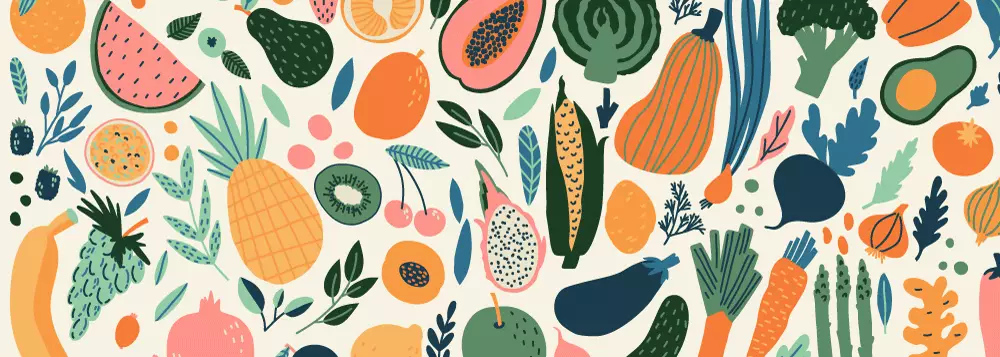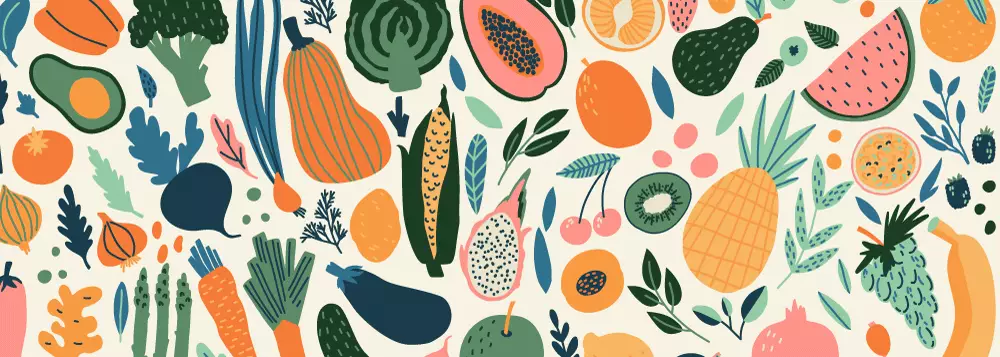Brain foods: 9 ways to eat to help improve concentration and memory
This article has been vetted by University of Phoenix's editorial advisory committee.
Read more about our editorial process.
Reviewed by Christina Neider, EdD, Dean, College of Social and Behavioral Sciences
At a glance
- The MIND diet helps establish overall wellness while also possibly improving brain function, brain health, memory and concentration.
- Brain foods that can help slow down cognitive decline include leafy green vegetables, whole grains, nuts, beans, meat and aquatic foods (in limited quantities), berries and colorful veggies.
- What you cut out can be just as important as what you consume. White, processed foods (think bread and sugar) top the list of no-gos.
- Look for foods that provide antioxidants, omega-3 fatty acids, nutrients and vitamins —especially vitamins C and E — all of which may help improve brain function and health.
This article was updated on 12/7/2023.
Eating with purpose
Hippocrates was onto something when he observed, “Let food be thy medicine and let thy medicine be food.” Food impacts the way we feel, from how much energy we have to how well we can pay attention. And if you’re juggling school, work and family, you may find you need all the help you can get when it comes to brain health, feeling present and being able to focus.
A simple internet search will yield plenty of insight to “brain food” — those unicorns of the food pyramid that someone swears will enhance your cognitive abilities. But before you head to the farmers market, Linnea Axman, associate dean for undergraduate and doctoral studies in the College of Nursing at University of Phoenix, has some tips about what to add and what to subtract from your diet.
Explore degrees that expand your skills and prepare you to lead in nursing.
The opportunities and limitations of your diet
Axman has been a nurse practitioner for 30 years. Her focus, she says, has been to work with people on disease prevention, wellness promotion and managing chronic illnesses.
Diet plays a complex role in all that, but (contrary to Hippocrates’ maxim) it doesn’t always dominate. Food and exercise, in other words, are important components for general wellness, but they can’t always cure ailments or prevent disease. Both are mitigating factors in the right direction more than solutions in and of themselves.
The key, Axman suggests, is to consider your overall lifestyle. From this perspective, she endorses the MIND diet, which stands for Mediterranean-DASH Diet Intervention for Neurodegenerative Delay. It combines foods found in both the Mediterranean and DASH diets — two of what are considered the healthiest diets — that have been shown to be associated with helping improve brain health. These foods are high in antioxidants, omega-3 fatty acids, nutrients and vitamins (such as vitamin E).
The MIND diet, she says, “has been shown to slow cognitive decline; improve heart health [and] blood sugar highs and lows; prevent some cancers; [and] decrease symptoms of rheumatoid arthritis. … Multiple studies have found that decreasing inflammation and oxidative stress protects the brain, improves circulation and stabilizes blood sugar, which also will assist with memory and cognitive function.”
Good cardiovascular health, in other words, optimizes the flow of blood to the brain, which helps optimize its performance. That this diet is also associated with decreasing the negative effects of stress, improving sleep and even improving symptoms of depression is just icing on the (sugar-free) cake.

9 brain foods for focus
So, what kinds of brain foods make the MIND cut for improved memory and concentration? Here’s the skinny:
1. Whole grains
Put away the Wonder bread. We’re talking grains like quinoa, oats, wild rice and brown rice three or more times a day.
2. Leafy greens
Kale, spinach, broccoli, collard greens — the stuff of a dietitian’s dream. Try to get more than six servings a week.
3. Non-leafy green vegetables
Think carrots, beets and colorful veggies that are neither white (potatoes) nor leafy and green. Aim for more than a serving a day.
4. Nuts
Walnuts, almonds, pistachios — try to get five or more 1-ounce servings each week. Certain nuts are a great source of fatty acids. (Peanuts also count, even though they’re technically legumes.)
5. Beans and legumes
Shoot for four or more servings a week of black, pinto, kidney or navy beans, or legumes like lentils and chickpeas.
6. Berries
MIND guidelines suggest two or more servings of crowd-pleasing blueberries, strawberries, raspberries and blackberries each week. Berries, especially blueberries, are a great source of antioxidants.
7. Poultry
Add turkey or chicken to your meal plan twice a week.
8. Aquatic food
Once or more a week, enjoy a meal with cod, catfish, shrimp, salmon, sardines, scallops, tuna or another “blue food.” These foods are high in omega-3 fatty acids and other nutrients.
9. Olive oil
If you need to work with added fat, try to make it olive oil. In fact, you should strive to get less than one tablespoon of butter or margarine daily. Olive oil is a good source of vitamin E.
The fine print
What all these foods have in common is their virtues: They’re high in vitamins, antioxidants, minerals and omega-3 fatty acids. They’re also minimally processed.
For those who feel like they aren’t getting all the nutrients they need, Axman recommends discussing supplements with a healthcare provider. (This is more than an obligatory disclaimer: Some supplements can interact with prescribed medications in dangerous ways, so definitely check before taking them.) Vitamin D3, B-complex vitamins, fish oil, SAM-e, acetyl-L-carnitine and N-acetyl-cysteine have all been shown to “improve mood and preserve cognitive function,” Axman says.
Foods to avoid
“When I talk to my patients about what to do, I tell them what not to do first, because that’s a shorter list,” Axman says.
Admittedly, working in six servings of this and three servings of that can feel daunting, especially if you’re busy with school and work. So, when it’s easier to start with the no’s rather than the yeses, here’s how to do it.
Take the white out of your diet
White bread, white rice, white pasta — all of it’s better for you when it’s brown.
Minimize sweets and pastries
Whether it’s cake after dinner or doughnuts at breakfast, sweets should make an appearance only rarely. (Think fewer than five servings a week.)
Cut back on red meat
If you eat red meat, try to limit servings to fewer than four a week.
Same goes for cheese and fried foods
Yes, feta is part of the Mediterranean diet. No, that doesn’t count for much in this adapted plan. Axman recommends just one serving of cheese or fried food each week.

How to make it all work
Meal planning is usually the most effective way to avoid lapses and stick with the good stuff that will make you feel and think better. Axman likes to make healthy shakes for one or two meals a day and then have a third meal of whole foods.
“Shakes can be made ahead of time and stored, but fresh foods will lose significant nutrients if stored, so try to consume them within a day or two,” she advises.
Another trick? Apps and websites can help with meal planning, so you don’t have to try to dredge up what you had for lunch three days ago. Some of Axman’s favorites are:
Using apps and websites to plan also encourages mindful eating, which is beneficial on multiple levels.
“Using all your senses to experience food promotes a more enjoyable eating experience,” Axman says. “Mindful eating can … combat distracted eating, which can lead to anxiety, emotional eating, overeating, binge eating and weight gain.”
Sometimes getting started is the hardest part. But the Mediterranean and MIND diets are especially good for stabilizing your blood sugar relatively quickly, and feeling good from that may just be the best incentive to keep with it.
Focused eating: 3 recipes for enhanced concentration
Wondering where to start incorporating these foods into your diet? Here are three supercharged recipes to try!
5-minute smoothie
- 3/4 C frozen berries (blueberries, strawberries, raspberries and/or blackberries)
- Handful of spinach or kale
- 1/4 C spontaneous brain booster (e.g., banana, orange, avocado, more berries, etc. Anything you have on-hand will work, and it's a great way to use up fruits or greens that are about to go bad)
- 1 C milk of choice
- 1 T coconut oil or avocado oil (if not using avocado as your brain booster)
- 3 T old-fashioned oats
- Agave, stevia, honey, maple syrup or monk fruit to taste (optional)
1. Add your milk to a blender.
2. Blend in your frozen berries, sweetener and your “brain booster.” Puree until smooth and creamy.
5-minute superfood salad
- 1 bag of spinach and arugula mix
- 1/4 C blueberries
- 1/4 C strawberries
- 1/3 ripe avocado
- 2 T walnuts
- 1/4 lemon
- 1/2 tsp olive oil
1. Toss three handfuls of spinach and arugula mix, blueberries, strawberries, avocado and walnuts into a bowl.
2. Squeeze the lemon over everything. Then, drizzle olive oil over the salad and serve.
Time-saver turkey chili
Serves 4
- 1 tsp olive oil
- 1 large onion, chopped
- 2 garlic cloves, minced
- 1 lb lean ground turkey (substitute soy crumbles, soy curls or Burmese tofu if you want to skip meat)
- 1 14-oz. can diced tomatoes
- 1 T tomato paste
- 1 14-oz can corn kernels, drained and rinsed
- 1 14-oz can black beans, drained and rinsed
- 1 4-oz can diced jalapenos
- 1 T chili powder
- 3/4 C shredded cheddar cheese
- Salt and pepper to taste
1. Heat a non-stick skillet on medium. Add olive oil, onion and garlic. Cook for about three minutes.
2. Add ground turkey (or meat substitute) and break into pieces. Brown the meat for about five minutes. Season with salt and pepper.
3. Stir in diced tomatoes, tomato paste, corn, black beans, jalapeno and chili power. Cover with a lid and cook for 10 to 15 minutes.
4. Remove from heat, and add shredded cheese. Mix well and serve.

ABOUT THE AUTHOR
Elizabeth Exline has been telling stories ever since she won a writing contest in third grade. She's covered design and architecture, travel, parenting, lifestyle content and a host of other topics for national, regional, local and brand publications. Additionally, she's worked in content development for Marriott International and manuscript development for a variety of authors. Today, if given a free hour and the choice, she'd still prefer to curl up with a good story.




